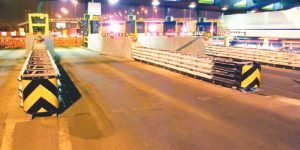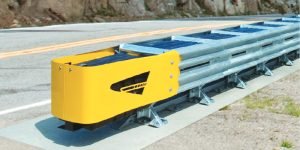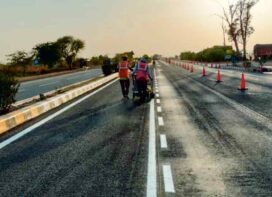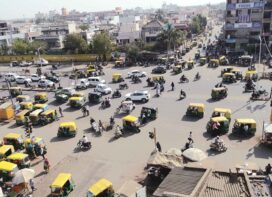Avantech Engineering Consortium Pvt Ltd is offering in India, the widest range of Impact Attenuators from Trinity Highway, USA. Trinity impact attenuators meet the specifications for impact attenuators as laid out in MoRTH specifications handbook and various IRC manuals such as IRC SP-87, IRC SP-84 and IRC SP-89. Parampreet Singh, Chief Executive, Avantech writes about the features of this safety device

Traffic Impact Attenuators or crash cushions, are road safety devices that are designed to absorb a colliding vehicle’s kinetic energy and to bring it to a safe stop.
Impact attenuators are placed in front of gore areas formed at exits, road diversions, beginning of a grade separator, foundations of large road sign gantries, traffic islands at Toll plazas etc. These gore areas pose extreme danger to oncoming vehicles and the occupants as crashing into unprotected gore areas can cause grievous injuries and the death of the vehicle’s occupants.
There is a massive amount of kinetic energy that a fast moving vehicle carries which is dependent on the mass and velocity of the colliding vehicle. An effective impact attenuator must therefore be engineered and designed to absorb this energy and provide a safe stop to the colliding vehicle.
The impact attenuator should also be designed to be non-gating, and safely redirect the vehicle if the impact is in an offset, or on the side so as to provide a safe stop to the colliding vehicle.

International Crash Test Standards
The severity of a crash can depend on several variables, such as the mass, CG of the vehicle, velocity, point and angle of impact etc. The impact attenuators must be crash tested under a matrix of such variables so that their effectiveness can be certified.
The crash test standards such as NCHRP-350, MASH and EN-1317-3 are the relevant crash test standards that prescribe the variables mentioned above.
How to choose an Impact Attenuator
Avantech offers a large choice of Trinity Impact Attenuators that are tested to MASH, NCHRP-350 or EN-1317-3 under various test levels.
The customer can select an impact attenuator from the crash test standard and test level relevant to the project and as specified in the contract.
The next criteria in selecting an impact attenuator is the width of the rigid object. Impact attenuator width in the back should be equal or little larger than the rigid object it protects. The attenuators come in a wide range of widths ranging from the popular 600mm standard width to very wide options.

Lifetime cost of Impact Attenuators
Impact attenuators are placed in location where they are expected to be impacted, therefore repair costs play an important role in lifetime cost of the impact attenuator.
Self-restoring or highly repairable attenuators tend to be more complex and therefore more expensive but can be repaired multiple times at a fractional cost. The attenuators with low repairability on the other hand may have a low upfront cost but cannot be repaired economically. The customer should therefore evaluate the lifetime cost of an impact attenuator and not the just the upfront cost while selecting the product on a project.
Self-Restoring Impact Attenuators
The Trinity REACT-II 350 is self-restoring impact attenuator that self-restores to its original position after a design impact and can take several impacts without needing any major repairs. This should be used at high frequency impact locations where repairing or access is difficult. THE REACT-II 350 complies to the requirement of manual IRC-SP-99 that specifies self-restoring impact attenuators .
Easy to Repair Impact Attenuators
Trinity Impact attenuators are also available as easy to repair form under the world famous models TRACC and QuadGuard. While TRACC can be repaired by replacing the energy absorbing sacrificial plates at the bottom, QuadGuard is repaired by replacing the crushable, sacrificial cartridges.
Low repairability Impact Attenuators
Low repairability systems may meet the required crash test performance, but they usually cannot be repaired after an impact and need to be replaced as repairs are either not possible or too expensive. So, these should be used only when the probability of impact is very low.
Some of the key installations by Avantech include the ones in Panipat – Haryana; Yamuna Expressway – Uttar Pradesh; Guwahati – Assam and Patna – Bihar where the effectiveness of the systems in the Indian Conditions have been proven and several lives have been saved.
 TrafficInfraTech Magazine Linking People Places & Progress
TrafficInfraTech Magazine Linking People Places & Progress


